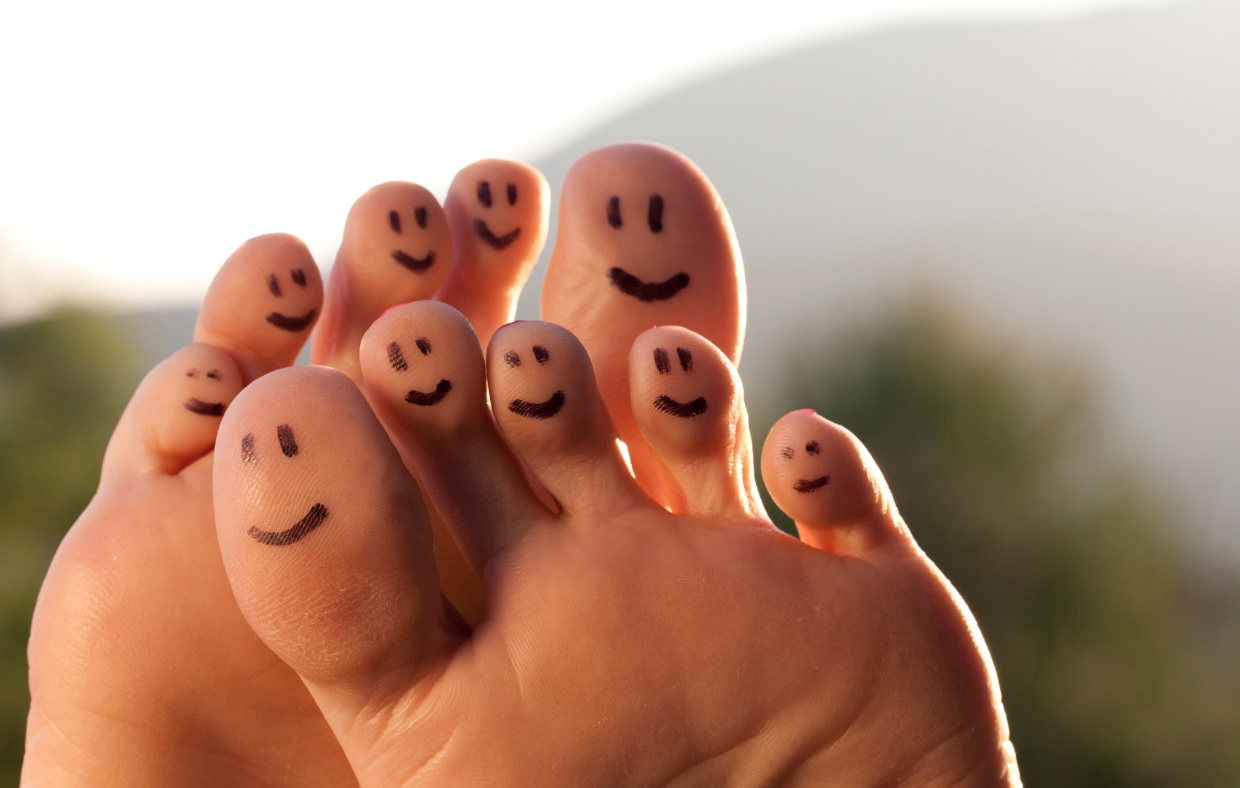Have you ever thought, “Wow, I am so glad I have healthy feet.”?
Most of us don’t give much thought to our feet, in spite of the fact that, depending on how long we live and how active we are, our feet can allow us to walk upwards of 100,000 miles! Cars that go that far get plenty of new tires, but we humans only get one pair of feet.
April is National Foot Health Month, and I’m glad it exists, because people neglect their feet all too often, despite how important they are. Keeping our feet in good shape helps us stay active and moving properly, which contributes to good health overall.
It’s hard to move well if your feet aren’t up to the task. Once you lose your mobility, other health problems start to pop up, beginning a domino effect of issues that affect your wellbeing. The sooner you learn how to keep your feet healthy, the better off you’ll be–now and for the rest of your life.
How common are foot problems?
Approximately 20 percent of Americans experience at least one foot problem every year, according to the American Podiatric Medical Association (APMA). When you think about how hard our feet work, that number makes sense.
Some of the more common problems include bunions, bony prominences, hammer toes, ingrown nails, low arches, slow-healing cuts, plantar fasciitis, soft tissue injuries, and persistent aches and pains. If you experience any of these conditions, talk to your medical provider. If left untreated, foot problems can wreak havoc on your posture and balance, which can lead to pain in your legs, back, and joints.
Some people have a higher risk of developing foot problems than others, especially those with poor sensation and circulation in their feet, often due to diabetes or vascular diseases. If you have numbness in your feet, regular visits with a podiatrist should be part of your regular treatment plan.
We also tend to see more foot problems in people who stand a lot, like firefighters, chefs, and construction workers. If you have a job that keeps you on your feet, make an extra effort to keep your feet healthy.
Everyday Foot Care
Taking care of your feet is a lot like taking care of your teeth: a little effort every day leads to healthier results over the long run.
Start by making sure your shoes aren’t letting you down. As most runners know, you should change your shoes about every 500 miles, which equates to every six months to a year for most of us. Soles wear out quickly, causing shoes to lose support as the miles add up. Your lucky sneakers that are decades old aren’t doing you any favors, even if they are the most comfortable shoes ever.
If your feet constantly hurt, a podiatrist can evaluate your shoes to see whether they have enough support. Sometimes inserts or better shoes can make a big difference.
Next, examine your feet often, including the tops and bottoms, especially if you have numbness or issues with sensation. A mirror makes the task easier. Look for anything red, irritated, or draining, or any cuts or general discoloration. If you notice any of these signs, or if you have pain that persists for several days, schedule an appointment with your medical provider.
As far as nail polish goes: take it easy. Nails need time to breathe to decrease the chances of fungus. Summer is the best time to paint your toenails, but consider holding back the rest of the year.
Speaking of summer, remember to use sunscreen when you’re walking around in bare feet or sandals. People aren’t used to applying sunscreen to their feet, making sunburns all too common.
Lastly, maintaining a healthy weight takes pressure off of your feet, which makes it easier for them to do their job without injury. With a little bit of TLC—and a good pair of shoes—your feet should take you wherever you want to go.
If problems do arise, even minor ones, talk to your medical provider, so they can refer you to a podiatrist if needed. It’s much better to be safe than sorry. Your feet will thank you down the road.
Dr Adelina Stateva is a podiatrist at MCHC Health Centers—a local, non-profit, federally qualified health center offering medical, dental, and behavioral health care to people in Lake and Mendocino Counties.

 MyChart Login
MyChart Login

